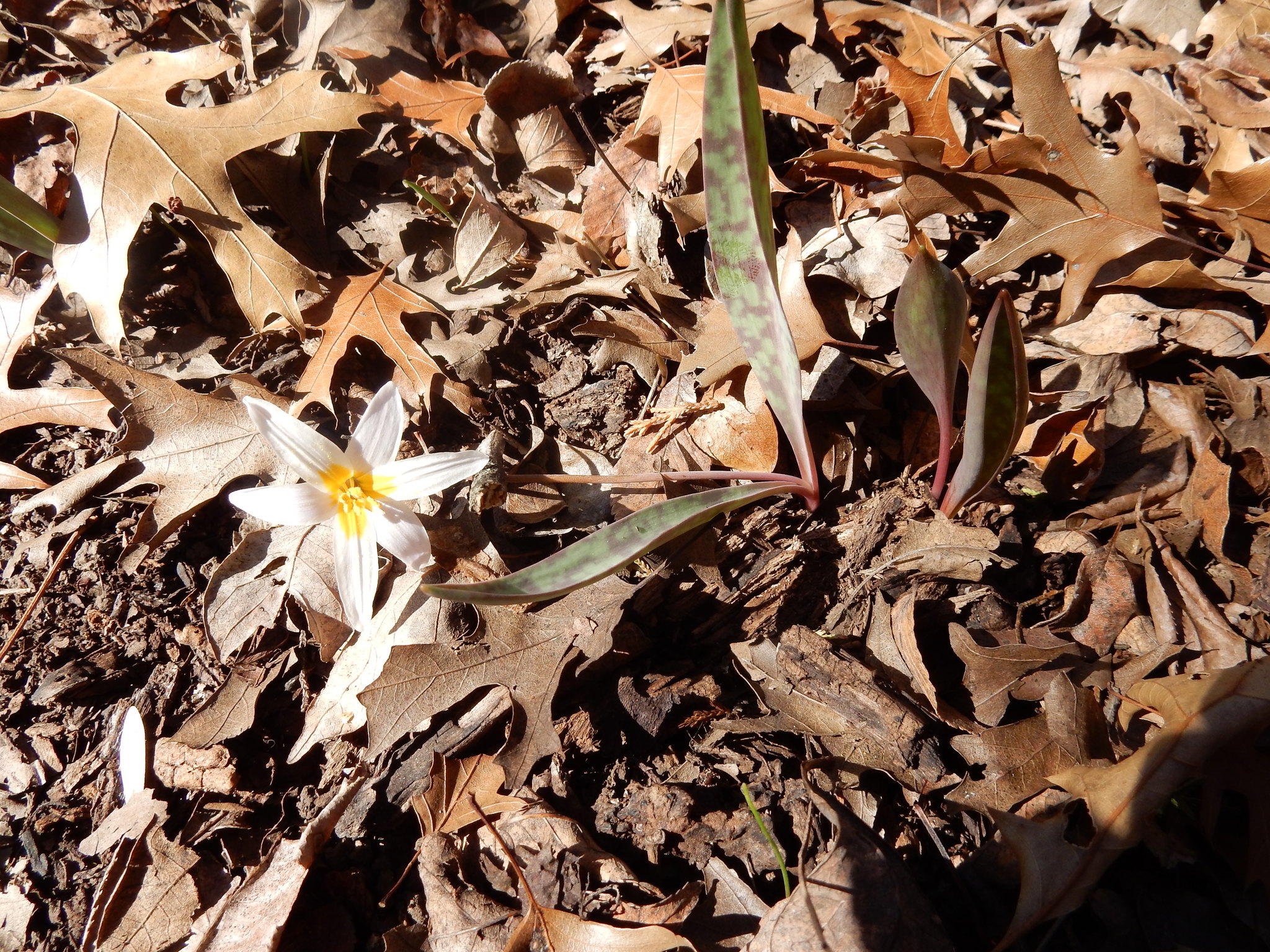Prairie trout lily
(Erythronium mesochoreum)

Description
Erythronium mesochoreum is a flowering plant species that belongs to the family Liliaceae. It is commonly known as the prairie trout lily or eastern turkeybeard. This species is native to North America, particularly in the central United States, and is widely cultivated as an ornamental plant. Erythronium mesochoreum has a unique appearance and habitat, making it a fascinating plant to study and grow. Taxonomy Erythronium mesochoreum was first described by botanist Frederick Pursh in 1814. It belongs to the genus Erythronium, which contains around 20 species of bulbous perennial plants. The name Erythronium comes from the Greek words "erythros," which means red, and "onion," which means onion or bulb, referring to the reddish-brown color of the bulb scales. Description Erythronium mesochoreum is a herbaceous perennial that grows from a bulb. The leaves are basal, meaning they grow from the base of the plant, and are long and narrow, measuring up to 10 inches long and 1 inch wide. The leaves are usually mottled or spotted with brown or purple and have a distinctive drooping appearance. The stem of the plant can grow up to 16 inches tall and bears a single flower that hangs down from the top of the stem. The flower of Erythronium mesochoreum is bell-shaped and measures 1 to 1.5 inches across. The petals are white or cream-colored and are often tinged with pink or yellow at the base. The flower has six petals, with the three outer ones being slightly larger than the inner ones. The flower has a prominent central stamen with a yellow anther, which contains the pollen. Habitat Erythronium mesochoreum is native to North America, particularly in the central United States. Its distribution range includes the states of Illinois, Indiana, Iowa, Kansas, Kentucky, Michigan, Minnesota, Missouri, Nebraska, Ohio, Oklahoma, Tennessee, and Wisconsin. Within this range, Erythronium mesochoreum can be found in a variety of habitats, including open woods, savannas, prairies, and meadows. The plant prefers well-drained soil and can tolerate both acidic and alkaline soils. It is a spring ephemeral, meaning it blooms in the early spring before the trees and shrubs have fully leafed out. After the plant flowers, it goes dormant for the rest of the year, with the leaves and stem dying back. Despite being widely distributed, Erythronium mesochoreum is considered a species of concern in some states due to habitat loss and degradation. Efforts to conserve Erythronium mesochoreum include protecting its natural habitat, controlling invasive species, and promoting its cultivation as an ornamental plant. Cultivation Erythronium mesochoreum is widely cultivated as an ornamental plant due to its unique appearance and early blooming period. It prefers partial shade and moist, well-drained soil. The bulbs should be planted in the fall, about 4 inches deep and 6 inches apart. When planting Erythronium mesochoreum, it is important to choose a site with adequate moisture, as the plant does not tolerate drought well. The soil should also be well-drained, as the bulbs can rot if left in standing water. Erythronium mesochoreum is a low-maintenance plant that requires little care once established. It can be fertilized with a balanced fertilizer in the spring when growth begins. The plant should be watered regularly, especially during dry periods, to prevent the soil from drying out. Erythronium mesochoreum can be propagated by division, which should be done in the fall when the plant is dormant. The bulbs can be carefully dug up and separated, making sure each bulb has roots and a growing point. The bulbs can then be replanted in a new location or back into the same location with fresh soil. Overall, Erythronium mesochoreum is a relatively easy plant to grow and can add a beautiful touch of spring to any garden or landscape. Uses Erythronium mesochoreum has limited historical use in Native American medicine for treating colds, coughs, and fever. However, due to the lack of scientific evidence to support its efficacy, the plant is not widely used for medicinal purposes today. The primary use of Erythronium mesochoreum is as an ornamental plant. It is widely cultivated for its unique appearance, early blooming period, and ability to thrive in shady areas. It is commonly used in gardens, landscapes, and naturalized areas, adding a beautiful touch of spring to any setting. Additionally, Erythronium mesochoreum is occasionally used in native plant restoration projects and ecological landscaping. It is also an important species for pollinators, providing nectar and pollen for bees, butterflies, and other insects. Overall, Erythronium mesochoreum is a valuable plant with both aesthetic and ecological benefits. Conservation Status Erythronium mesochoreum is not considered an endangered species, but it is a species of concern in some states due to habitat loss and degradation. It is also threatened by invasive species, such as non-native grasses, which can outcompete it for resources. Efforts to conserve Erythronium mesochoreum include protecting its natural habitat, controlling invasive species, and promoting its cultivation as an ornamental plant. By planting Erythronium mesochoreum in gardens and landscapes, individuals can help to increase the population of this species and ensure its survival. In addition to these conservation efforts, Erythronium mesochoreum is also protected by state and federal laws. For example, it is illegal to harvest or collect Erythronium mesochoreum from the wild without a permit. This helps to ensure that wild populations of the plant are not overexploited. Overall, while Erythronium mesochoreum is not currently endangered, it is important to continue monitoring its populations and implementing conservation efforts to ensure that it remains a viable and healthy species for future generations to enjoy.
Taxonomic tree:







